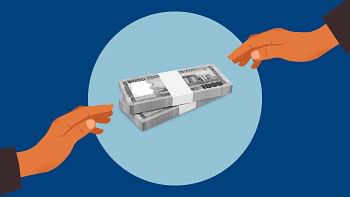Power-sugar plant likely in the north
The second phase of a feasibility study has been completed to establish a plant to produce power and white sugar under a co-generation method at Lalpur North Bengal Sugar Mills (NBSM).
"The plant will play a vital role in meeting demand for power in the country along with generating employment," said officials.
According to mill sources, work on the study to set up the power and white-sugar generation plant under a co-generation system at the mill started in 2007, based on the first phase of a report submitted by a delegation from the mechanical department of Bangladesh University of Engineering and Technology.
Last Friday, a five-member delegation from Bangladesh Sugar and Food Industries Corporation (BSFIC) reviewed the proposed plant and commented positively.
Abul Kashem, director (production and engineering), Aminul Haque, chief engineer, Lokeman Hossain, chief chemist, Jotirmoy Barua chief electrical engineer, and Intaj Ali, chief civil engineer, were members of the delegation.
"The prospect to produce power and white-sugar under co-generation in the mill is positive in all aspects," said Kashem.
He also said at least nine megawatts of power could be generated from the plant everyday, if three turbines are commissioned. Of the power produced, 2.5-3 megawatts could be used for the mill.
After meeting demand from adjacent Lalpur, Bagatipara, Bagha and Charghat, the rest 6-6.5 megawatts could be added to the national grid, he added.
For power generation, sugarcane waste and coal would be used as fuel during the crushing season, while coal would be used at other times.
"Simultaneously, around 735 tonnes of white sugar could be produced everyday from the mill. If necessary, initiatives to purify the raw sugar would be taken. Therefore, huge job opportunities for the unemployed would be created," he added.
Currently, the mill is manufacturing around 120 tonnes of sugar a season on average.
"It is estimated that about Tk 160 crore is needed to implement the project in the preliminary stages. On the project's successful implementation in the next two years, the mill will make profits worth around Tk 250 crore annually," Sirajul Haque, managing director of NBSM, told the news agency.
"We have all the requisite facilities and a sound atmosphere to establish the co-generation plant and run it smoothly."
The nation and its people would be benefited by implementation of the plant, he added.
"Carew and Company at Chuadanga has become more profitable after installing a distillery unit. So, why not the other sugar mills in the country?" questioned Dr Samajit Kumar Pal, principal scientific officer of Bangladesh Sugarcane Research Institute.
He said the country's sugar mills have become a losing concern due to a lack of effective management and policy.
Three major byproducts of the sugar mills -- bagasse, molasses and press mud -- are the raw materials for several value-added finished products.
In addition to producing power and white paper, many developed nations use bagasse as a raw material for farming, molasses for alcohol and press mud for organic fertiliser, he added.
"We need proper and effective planning and implementation to best use sugar mill byproducts," added Pal.
"There is no way but to make the sugar mills profitable to encourage farmers."

 For all latest news, follow The Daily Star's Google News channel.
For all latest news, follow The Daily Star's Google News channel. 



Comments